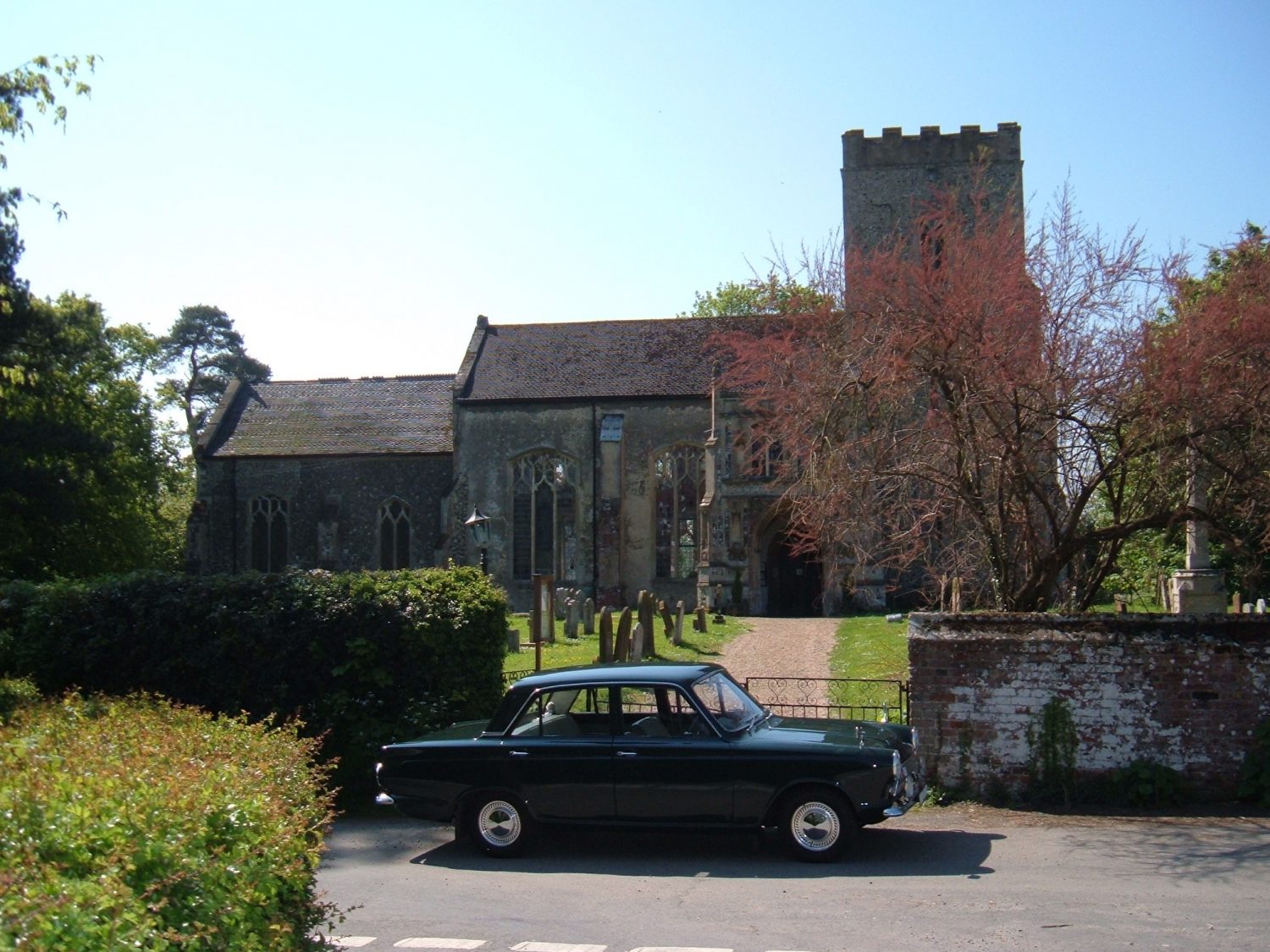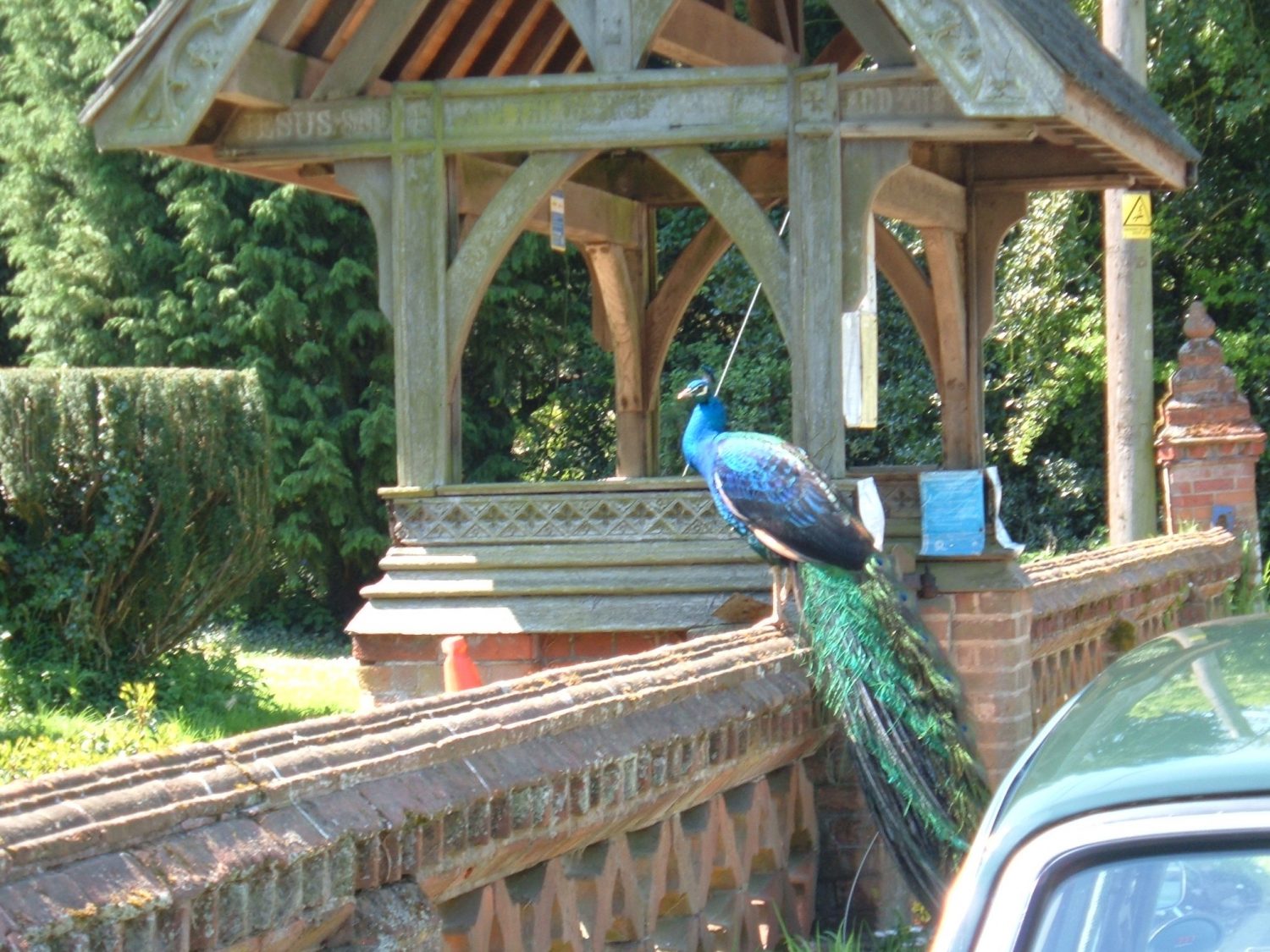Suffolk Churches – a series of journeys in a Mk 1 Cortina by Bernard Butler – Chapter 11
Managing Director – Bridge Classic Cars
[vc_row][vc_column][vc_column_text]During our recent post on our visit to Morston Hall we mentioned meeting Bernard and his wife who had, at home, a Mk1 Ford Cortina.
Bernard told me as a part of his retirement that he travels around Suffolk and visits our churches and photographs his car with the church and writes about the experience.
We are very pleased to be able to share with you their fascinating story. All of the experiences you read of below are from Bernard Butler. Bridge Classic Cars do not claim ownership in any way.[/vc_column_text][/vc_column][/vc_row][vc_row][vc_column][vc_text_separator title=”Suffolk Churches – a series of journeys in a Mk 1 Cortina – by Bernard Butler”][/vc_column][/vc_row][vc_row][vc_column][vc_column_text]A fine day was promised on May 8th 2008 and so it turned out to be. Jane was away looking after Jamie, our first grand-son, so I put the dogs in their box and prepared for another adventure in the Cortina.
I set off quite early and headed off towards my first thatched Suffolk church – at Thornham Parva. It was open.
This is a beautiful church inside with a number and variety of notable features.
A visit should be a “must” on anyone’s list, and yet it has taken me four years to “pop down the road” to visit it! I have driven past a few times, but never stopped to go in.
The wall-paintings are very striking, reminiscent of Worlingworth, and the famous retable is resplendent, protected now by a clear screening, and it is amazingly well-preserved, being 700 years old. It was rediscovered in a stable loft at Thornham Hall in 1927, having been taken out of the church at the dissolution of the monasteries.
A short distance to the north brought me to Yaxley church – a fine building in this now by-passed village. Again, it was open, and I was enjoying today’s venture.
It boasts one of the best “guides” for any church I have come across – twelve sides with many illustrations, yet not expensive – well done Yaxley!
Inside there is a Sexton’s Wheel – unusual nowadays -, and some lively carvings and metalwork. I also learned here that the old tradition was for the men to sit in the north nave, and the women in the south nave.
All of today’s churches are to be found on the lower eastern edge of Ordnance Survey Map number 144, and you can see it is again only a short hop via the busy A140 to my next church – Thrandeston.
Nicely located and away from the houses of this small hamlet, this church was shut because of the need to restore parts which had become dangerous. Perhaps I will see inside another time. Outside on the west wall was an interesting stone carved inscription showing the name Sulyard quite clearly still. I have cut and pasted the following.
John Cornwallis [Parents] was born in 1491 in Brome Hall, Eye, Suffolk, England. He died on 23 Apr 1544 in Ashruge near Chesham, Buckinghamshire, England. He married Mary Sulyard.
Mary Sulyard was born in 1491 in Otes, High Laver, Essex, England. She died in 1544 in Essex, England. She married John Cornwallis.
I then headed north-east towards Stuston, but not before stopping to take a picture of this warning sign. Sadly, I saw no toads!
I have frequently by-passed Stuston church on my way to Diss – it is down a narrow track – and was relieved to realise that I was actually making this pilgrimage at last.
However, as I approached the church it became clear that I was going to draw a complete blank here because most of the nave roof was off, and there were builders’ lorries etc blocking the car park. It did not seem fair to take a picture of the church in this state, so I resolved to visit some time in the future when it is all finished. Strange that their nave roof restoration coincides with our own chancel roof restoration at St. Mary’s, Worlingworth.
I crossed the A140 and took the Stradbroke road towards Oakley. I found that the church was up a long hill, away from the village, with no houses nearby. Evidence of Plague Pits recently discovered half-way up the hill suggests that the remaining villagers moved to a new location when the plague devastated the population living around the church – this might well be worth researching further.
The church stands in glorious isolation and deserves a good congregation. Even though Munro Cautley was not taken by anything inside, it has a very good south porch of two storeys, with lovely depictions in glass which are well worth the visit alone.
There are a lot of trees in the churchyard and I could not get any closer than this for my picture, without driving through the gates into the churchyard. The car looks great as usual, although my reflection looks like one of those toads I was to look out for!
Coming past Brome Hall, where Sir John Cornwallis died in 1544 – see Thrandeston above – Brome Street hamlet stops, and then, a little further on, Brome itself begins.
In St. Mary’s Brome is the tomb of Sir John and his wife – Mary, nee Sulyard. The guide here states that she went to live at Thrandeston after his death, but my research showed she died the same year as he did – this may need more clarification, although she could have died very soon after him.
Before I could get out my car I was inspected by the resident (noisy) peacock!
This is an interesting, round-towered (Saxon) church, with another very good leaflet.
As I left, I got into conversation with an “old boy”, and his reminiscences nicely rounded off a very enjoyable tour.

North from Thornham Parva along a country road and then right at the junction towards Yaxley.
From Yaxley, retrace towards Mellis and turn right just before Mellis at the village green. Right at the T junction into Thrandeston.
Continue east to regain the A140, taking the next left off the main road (B1077) towards Stuston. Its church is first right, down a track.
Regain the B1077 going north and turn right at the roundabout. Take the right exit (third) at the next roundabout, and then first left onto the Stradbroke road (B1118) towards Oakley. You will see Oakley church on the hill on your right – take the unpromising right turn before you arrive in Oakley.
From Oakley church, continue to a right turn and follow the road round into Brome.
[/vc_column_text][/vc_column][/vc_row]







